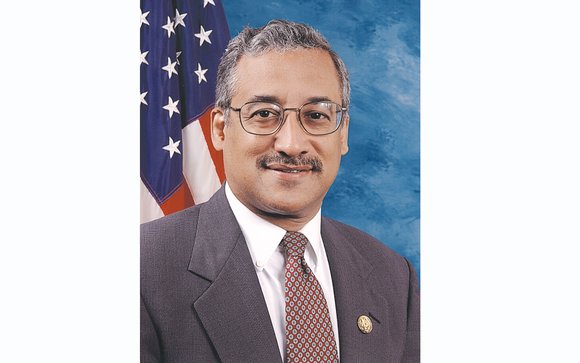City booted from Rep. Scott’s 3rd District in judicial order
Joey Matthews | , Jeremy M. Lazarus | 1/15/2016, 6:56 a.m.
Congressman Robert C. “Bobby” Scott no longer will represent Richmond in the U.S. House of Representatives if the decision of a three-judge panel sticks.
The federal court panel has redrawn the 3rd Congressional District that Rep. Scott has represented since 1993 after finding the GOP-dominated Virginia General Assembly illegally overstuffed the district with African-American voters.
While the new district is still subject to review by the U.S. Supreme Court, one big result is Richmond, Eastern Henrico and Charles City County — all Democratic strongholds — become part of the 4th Congressional District, which Republican Rep. J. Randy Forbes currently represents.
Meanwhile, the 3rd District would be confined largely to Newport News, Hampton, Norfolk and Portsmouth.
The overhaul reduces the African-American voting age population in the 3rd District from around 55 percent to around 45 percent, and lifts the African-American voting age population in the 4th District from around 32 percent to about 43 percent.
The decision, issued Jan. 7, appears to immediately raise the prospect of electing African-American candidates in more than one district in Virginia.
It also opens the door for a Democrat to capture the 4th District in November’s congressional election — if the U.S. Supreme Court upholds the panel’s plan.
While he has yet to announce, state Sen.. A. Donald McEachin, D-Henrico, already is corralling support for a likely challenge to the entrenched Rep. Forbes, according to numerous political insiders.
“We’ll have to wait to see what happens,” is all Sen. McEachin would say Tuesday as he prepared for the opening Wednesday of the General Assembly, where he serves as chairman of the Senate Democratic Caucus.
Rep. Scott, who is Virginia’s sole African-American congressman, is confident he can win re-election even with fewer African-Americans of voting age in the 3rd District.
He praised the panel for imposing “a new congressional map that fixes the unconstitutional racial gerrymander of Virginia’s 3rd Congressional District.
While Sen. McEachin expressed caution about what the U.S. Supreme Court may decide, others are more excited about the prospects.
“The map approved by the three-judge panel is a positive development,” Richmond Mayor Dwight C. Jones, a former state Democratic Party chairman, said. “This map gives Richmond a powerful, collective voice in choosing our next congressional representative, and could ultimately increase the number of Democratic members in the Virginia delegation.”
“All we have to do is make sure we get people out to vote,” said Reginald Ford, president of the Richmond Crusade for Voters, the area’s largest African-American political group.
The plan the panel endorsed appears largely to track a proposal Rep. Scott endorsed in 1991, when the majority-black 3rd District was first created. It also is aligned with a plan state Sen. Mamie E. Locke, D-Hampton, chair of the Virginia Legislative Black Caucus, proposed in 2011, when she sought to increase black voter influence in the 4th District.
Both Sen. Locke’s plan and Rep. Scott’s proposal were rejected at the time.
“I am happy that the judges adopted a plan very similar to the one I introduced,” Sen. Locke said. “I am glad that citizens in the 3rd and 4th districts will now have an opportunity to elect candidates of their choice.”
That’s also the reaction from Lynetta Thompson, president of the Richmond Branch NAACP. “I am pleased with the court’s order in that African-Americans will have a better opportunity to elect two representatives of their choice as opposed to one.”
Judge Albert Diaz of the 4th U.S. Circuit Court of Appeals wrote the opinion, which rejected a request from Republican General Assembly leaders to delay the changes until the U.S. Supreme Court considers an appeal.
The GOP opposed the change as unwarranted, but have lost two previous appeals of findings that race illegally was a major element in drawing the 3rd District boundaries.
Judge Diaz wrote that the panel, which included U.S. District Court Judge Liam O’Grady and Senior U.S. District Court Judge Robert E. Payne, had the authority to proceed and did not need to wait for a U.S. Supreme Court decision.
Judge Diaz and Judge O’Grady formed the majority that approved the new plan drawn by a special master, Dr. Bernard Grofman of the University of California-Irvine, as more compact, contiguous and fairer to voters while still protecting incumbents.
Judge Payne, however, continued to find no reason to implement a new plan, arguing, as he has in two previous dissents in the case, that there is no evidence that the General Assembly created a racial gerrymander in violation of the Constitution and the federal Voting Rights Act.
The plan actually impacts five districts. Along with the 3rd and 4th, the plan also changes the 1st, 2nd and 7th congressional districts. All three are represented by Republicans and its residents would be more likely to vote Republican as a result of the changes, according to political experts.
The 3rd District, which now looks like a chimney as it straddles the James River from Norfolk to Richmond, would more resemble a misshapen soccer ball under its new boundaries and its confines in the Hampton Roads area where Rep. Scott lives.
The 4th District, which will stretch from Chesapeake to Richmond, will have a greater resemblance to a boot under the new lines.








